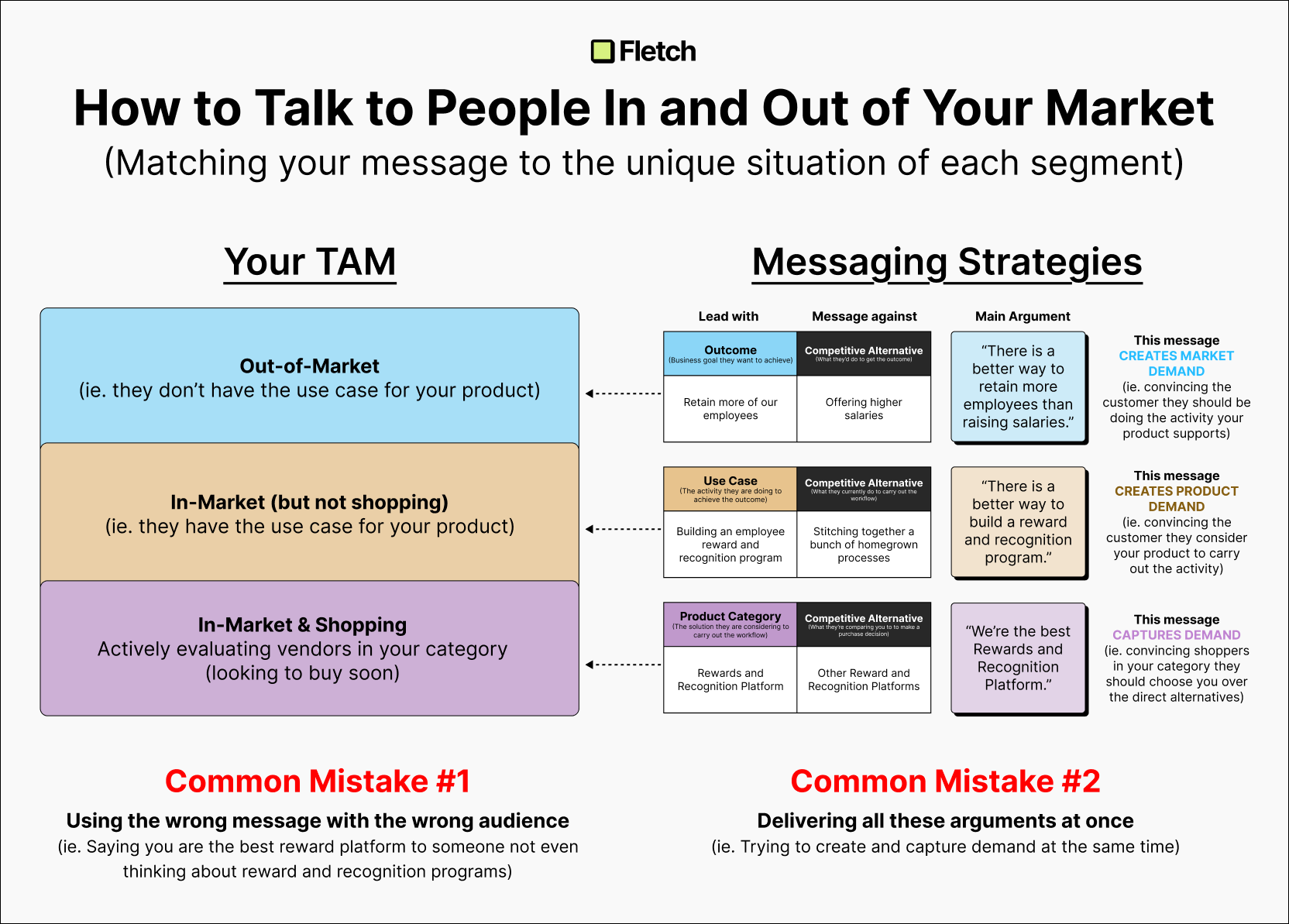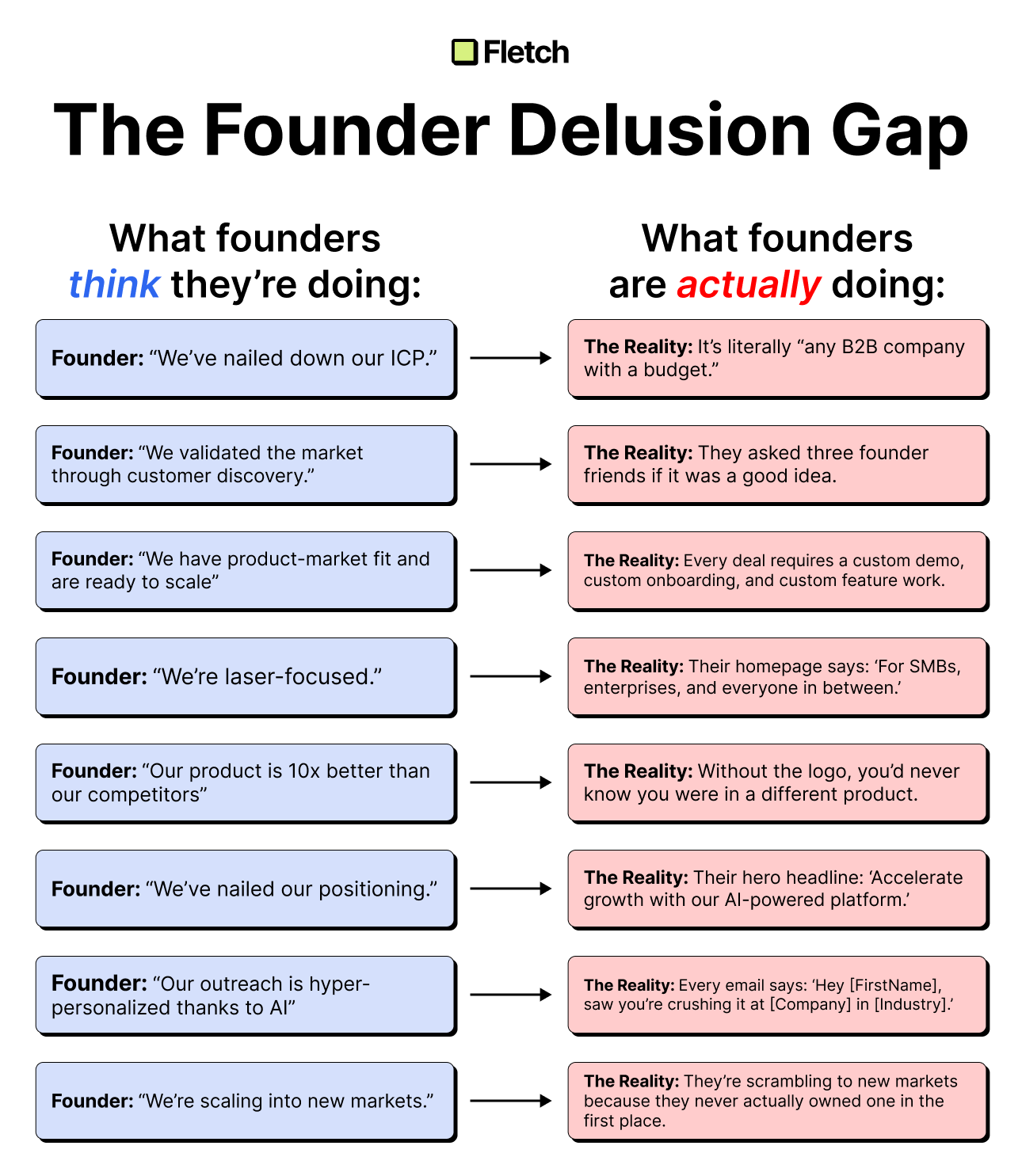How to Make Your Value Proposition More Believable


Not all "benefits" are equally believable.
The immediate benefit of your product is a "1st order benefit"
- this is extremely believable based on what your product does
Take Asana for example — it's a project management app that lets you put your teams tasks in one place.
The 1st order benefit is that your team will be more organized.
If you're Asana, you can make this claim and almost no one will dispute it.
However, the further you get away from what the product actually does (i.e. starting to talk about 2nd, 3rd, 4th order benefits), the less believable they become.
An analogy:
- Suppose I have a map of Illinois and I want to get to California.
- I can guarantee the map will get me to Illinois' border
- But I would need to be convinced (by a person) that it would be enough to get me to California.
To increase believability, only share 1st and 2nd order benefits on the channels you own (i.e. your website homepage, the ads you run, the content you create)
Only share 3rd, 4th, and 5th order benefits in actual conversations with sales people (who can help make the logic jumps) or if you have others independently validating the claims (in case studies, testimonials, etc.)

Ben Wilentz
Founder, Stealth Startup





